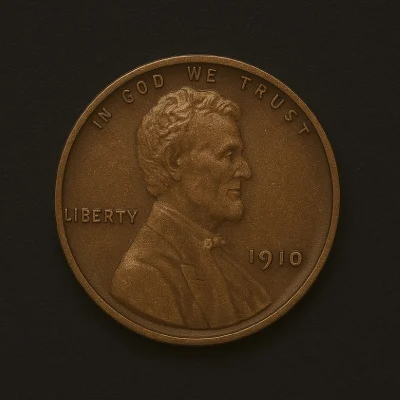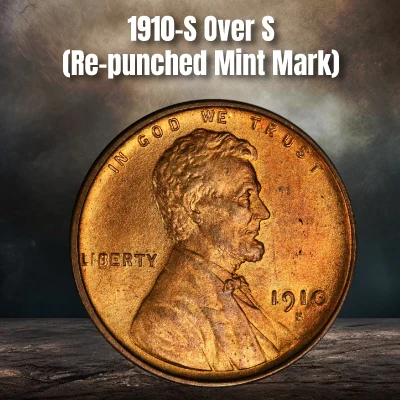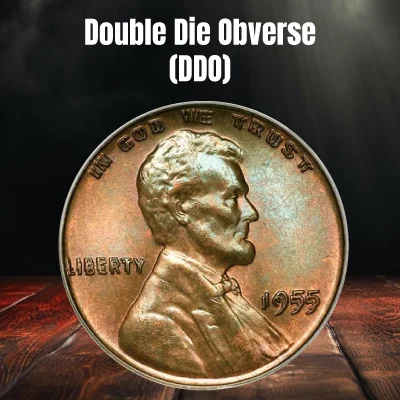
Coins can be worth much more than their face value—especially to collectors, buyers, and history fans. One example is the 1910 Wheat Penny. But why is the 1910 Wheat Penny Value so high?
Whether you’re new to coin collecting or already interested, it’s helpful to understand what makes the 1910 Wheat Penny special. In this blog, we’ll look at its history, importance, condition (grading), and value—so you can see why many people want this old coin.
The 1910 Lincoln Wheat Penny is a popular and valuable coin for collectors. It’s seen as a semi-important coin in the Lincoln cent series because it’s harder to find and has historical meaning. This penny was made at two mints: Philadelphia and San Francisco. The San Francisco version is rarer because fewer were made, which makes it more valuable.
The value of a 1910 penny depends on where it was made (mint mark), its condition, and its grade. Pennies that were never used (uncirculated) are the most valuable. Many collectors enjoy building a full set of Lincoln Wheat Pennies, and the 1910 coin is an important part of this collection.

The 1910 penny is part of the Lincoln Wheat series, which started in 1909 to honor the 100th birthday of Abraham Lincoln. It was designed by Victor David Brenner, with Lincoln’s face on the front and two wheat ears on the back.
In 1910, over 147 million of these pennies were made in Philadelphia and about 6 million in San Francisco. While that seems like a lot, the 1910 penny—especially ones in great condition or with the “S” (San Francisco) mark—is still seen as rare and valuable.
Its history and low numbers in top condition make it popular with collectors who want to add it to their sets.
The 1910 Wheat Penny is a U.S. one-cent coin from the Lincoln Wheat Cent series. This series started in 1909 to celebrate 100 years since Abraham Lincoln’s birth.
The coin shows Lincoln on the front (obverse) and has two wheat stalks on the back (reverse), which is why it’s called a “Wheat Penny.” It’s made of copper.
The 1910 Wheat Penny refers to the coins made in that year, making it part of the early years of this important coin series.
The 1910 Wheat Penny is part of the Lincoln penny series, which is an important part of U.S. coin history. First made in 1909, these coins became common in everyday life.
Here’s why the 1910 penny stands out:
Early Design Year: Even though the series started in 1909, the 1910 penny kept the popular wheat design with Lincoln’s picture.
Historical Meaning: It represents early 20th-century America, a time of big changes in society, politics, and the economy.
Collector Interest: Even though many were made, 1910 pennies are still seen as valuable—especially if they are in excellent condition.
The value of a 1910 Wheat Penny depends on how rare it is and how well it has been kept.
Lincoln cents, like the 1910 penny, are popular with collectors because they have historical value, nice looks, and are affordable. This coin series has been made for over 100 years, with different designs and mint marks, which makes collecting them both fun and challenging.
Many collectors try to build full sets of Lincoln cents in great condition. Rare ones like the 1910-S penny are especially wanted.
One reason this coin is popular is that they’re not too hard to find and not too expensive—good for beginners. Because of this, the 1910 Lincoln Wheat Penny is a favorite among coin collectors. Its value depends on its mint mark, grade, and overall condition.
Several key factors affect how much a 1910 Wheat Penny is worth. One of the most important is condition.
Coins are graded based on how much wear they show:
Poor (P): Very worn, most details are gone.
Good (G): Still worn, but some details are visible.
Fine (F): Some wear, but key features are clear.
Extremely Fine (EF): Light wear, most details still sharp.
Uncirculated (MS): No wear at all, looks brand new with original shine.
A 1910 penny in “Uncirculated” condition can be worth much more than one that’s worn out.
Mint marks are small letters on the front (obverse) of the coin that show where it was made. For the 1910 Wheat Penny, there are two types:
Why it matters:
Always check for the “S” mint mark — if you have one, it could be worth a lot more!
Coins that are hard to find and popular with collectors are usually worth more.
The 1910 Wheat Penny isn’t the rarest coin, but it’s still not very common—so collectors want it.
If you have a special version, like a 1910-S in great condition or with a minting mistake, its value can go up a lot.
Sometimes coins are made with mistakes — these are called error coins. Even if they look different, they can be very valuable because they are rare. For example, a 1910 penny with a minting mistake or other error can be worth much more than a normal one. Collectors like these coins because they’re rare and have interesting stories about how they were made.
Grading a coin helps you know how much it’s worth. It can be tricky at first, but here are some easy steps:
Check for wear: Look closely at Lincoln’s face and the wheat stalks on the back. If details are clear and sharp, the coin is in better shape.
Look for damage: Scratches, dents, or changes lower the coin’s value.
Use a grading guide: There are websites and books that show how to grade coins by comparing them to pictures and descriptions.
Getting the grade right is very important to know your coin’s true value. If you’re unsure, ask a professional coin grader or expert (called a numismatist) for help.
While most 1910 wheat pennies are common, some special versions are very valuable to collectors:

Some 1910-S pennies have the mint mark stamped twice, making a “double” mark. In this case, the S mint mark below the date is punched twice. The value of this error primarily depends on the condition and color of the coin. The brown penny value can be around $28 and increase to $1,400 for pristine condition. The red pennies can be worth anywhere from $285 to $20,000, depending on the grade and variety (FS-301 or FS-302).

Some pennies show doubled letters or numbers on the front because of a mistake during minting. These errors make the coin more interesting and worth more. This is a minting error caused by the die, which was observed in the coins minted in the Philadelphia Mint. Based on the condition and grade of the error, the value of 1910 Wheat penny DDO error can range from $50 to a few thousand dollars!
If you want to buy or sell a 1910 wheat penny, follow these tips to get the best deal:
Research Online: Check online coin shops and marketplaces to see current prices and trends.
Go to Coin Shows: Meet other collectors and dealers where you can buy, sell, or trade coins in person.
Get a Professional Appraisal: If your penny might be rare, have an expert check its value before selling.
Get Your Coin Certified: Having your penny graded and certified by a professional service can raise its value a lot.
Set a Budget: Collecting coins can get expensive. Start with coins that fit your budget and slowly collect more valuable ones.
Learn About Grading: Knowing how to grade coins helps you understand their value and buy smart. Condition matters a lot!
Join a Community: Connect with other collectors online or in person to learn more and share your hobby.
The 1910 Wheat Penny is more than just an old coin — it’s a valuable treasure with an interesting story. Whether you want it for investment or just love collecting rare coins, knowing what makes it special will help you make smart choices.
If you're curious about the 1910 wheat penny value or want to compare different 1910 pennies' value, it’s important to do some research. If you have a 1910 wheat penny, remember it’s a piece of history that can become worth more over time.
Take good care of it and learn about its history and value. With some knowledge and care, your coin can be a special part of your collection and might even grow in value!